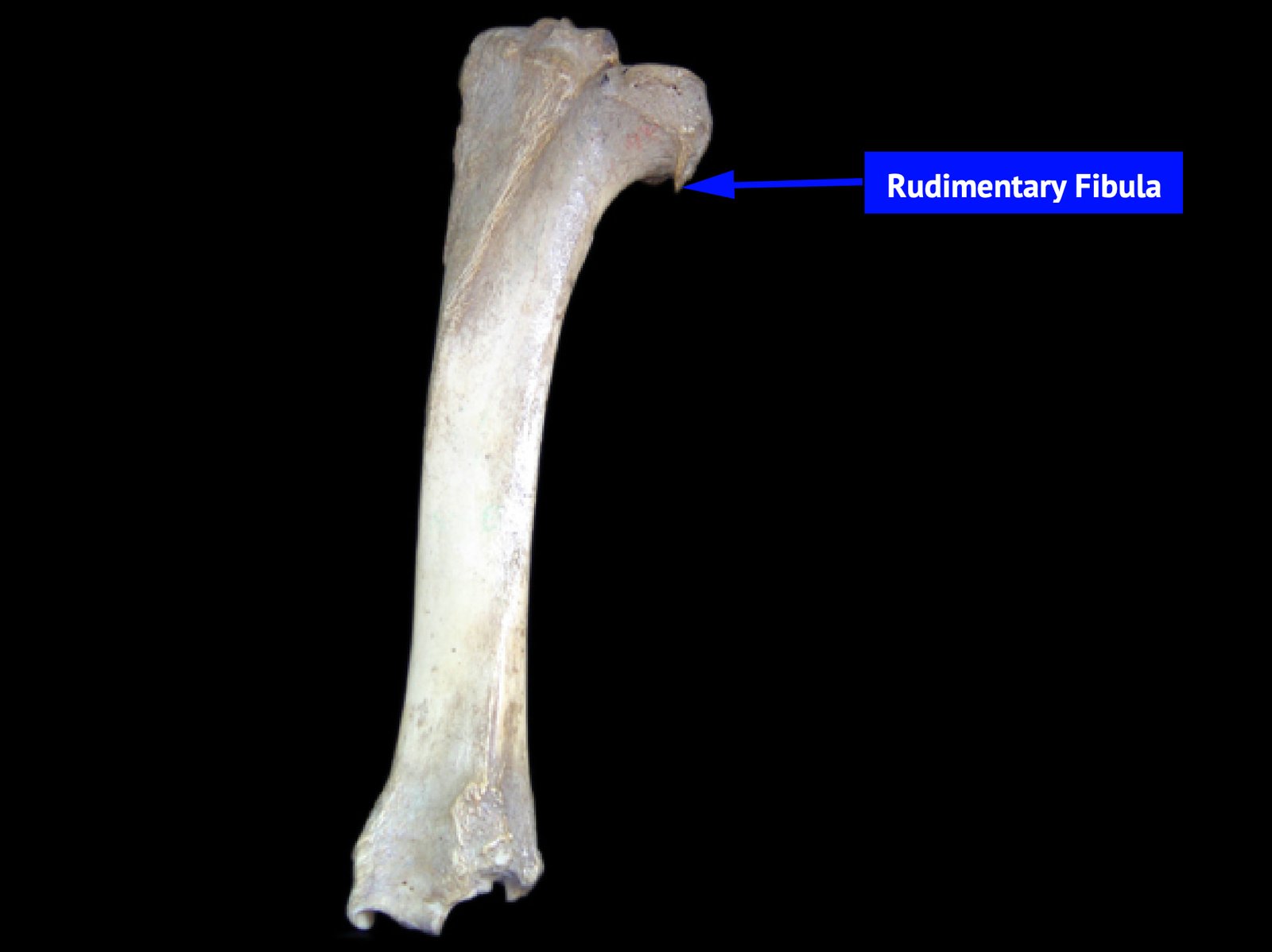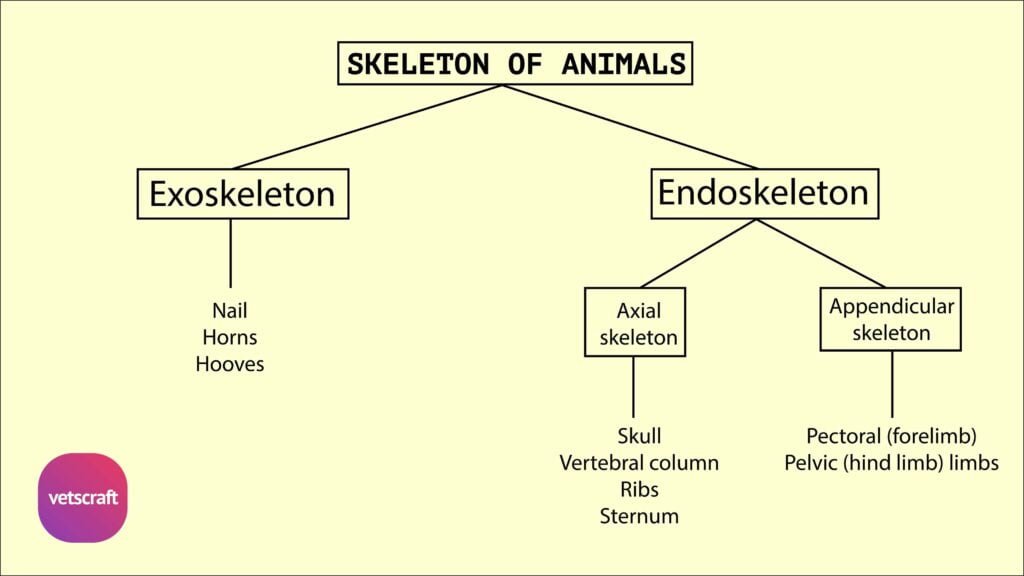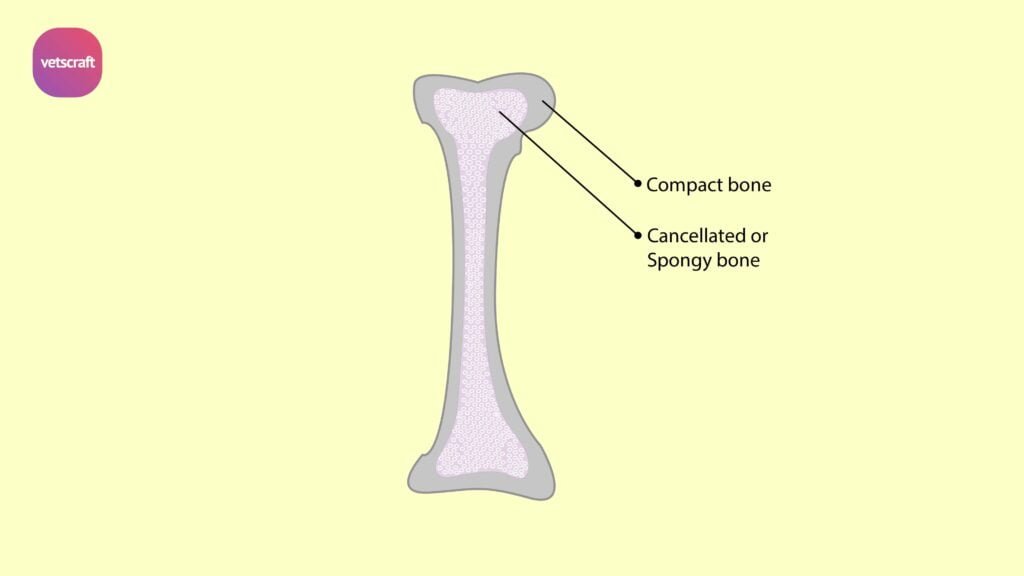TABLE OF CONTENTS
Anatomy of Fibula Bone in Animals: Ox, Horse, Sheep, Goat, Pig, Dog, Rabbit, and Fowl
The fibula is a long, slender bone located on the lateral side of the hindlimb, running parallel to the tibia. In most animals, it plays a secondary role in weight-bearing but contributes significantly to the stability of the hock joint and serves as an attachment site for muscles and ligaments.
The structure and development of the fibula vary greatly across species—ranging from a rudimentary fragment in ruminants like ox to a well-developed, complete bone in dogs and pigs.

Fibula Bone of Ox
The fibula bone of the ox is a rudimentary bone. The head is fused to the tibia and is continued below by a small shaft.

The distal extremity, or lateral malleolus, is connected to the shaft in life by a fibrous cord. It is quadrilateral in outline and compressed from the side. The proximal articular face is concave in front and convex behind. It articulates with the lateral facet of the distal extremity of the tibia.
The distal face has a concave facet for the fibular tarsal. The medial face presents a curved groove, which corresponds to the lateral ridge of the tibial tarsal. The lateral face is rough and irregular.
Comparative Anatomy of Fibula Bone
The fibula bone shows notable species-wise variation among domestic animals, especially when compared to that of the ox, which serves as the reference point in this discussion.
Sheep and Goat
- The fibula has no shaft, and its proximal end is represented by a small prominence below the lateral condyle of the tibia.
- The distal end forms the lateral malleolus, as in the ox.
Horse
- The fibula bone of the horse is better developed and placed along the lateral border of the tibia.
- The shaft is a slender rod that extends down to about the middle of the tibia, with which it forms the tibio-fibular arch.
- The proximal extremity is large and flattened from side to side.
- The medial face has a facet for the lateral condyle of the tibia.
- The lateral face is slightly convex and rough.
- The anterior and posterior edges are blunt and rounded, the posterior being the thicker.
- The distal extremity—the lateral malleolus—is fused to the tibia.
Pig
- The fibula bone of the pig extends the entire length of the tibia.
Dog
- The fibula of the dog is nearly as long as the tibia.
- It is slender, somewhat twisted, and enlarged at either end.
- The proximal extremity presents a facet on the medial aspect for the tibia.
- The distal extremity articulates with the tibia and the tibial tarsal medially and bears two tubercles laterally, the proximal being anterior.
Rabbit
- The tibio-fibula is formed by the fusion of the tibia and fibula in rabbits.
- The tibia is larger, and the fibula is thin and rod-like, situated along the lateral side of the tibia.
- The fibula is not fused with the tibia in its proximal third. Hence, the tibia alone forms the proximal articular surface.
- Distally, both the tibia and fibula share the articulation.
- The medial and lateral malleoli are in the form of small projections on the sides of the articular surface.
Fowl
- The fibula bone of the fowl is a thin, rod-shaped bone.
- It is thick above and tapers to a point below, reaching the lower third of the tibia.
- The head is massive and articulates with the lateral condyle of the tibia and presents a facet on its medial aspect for the lateral condyle of the femur.

